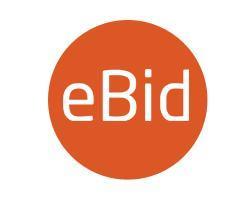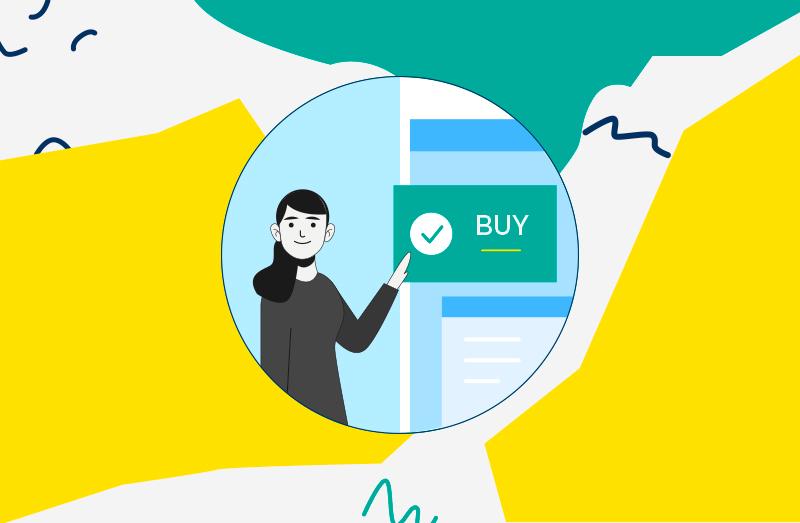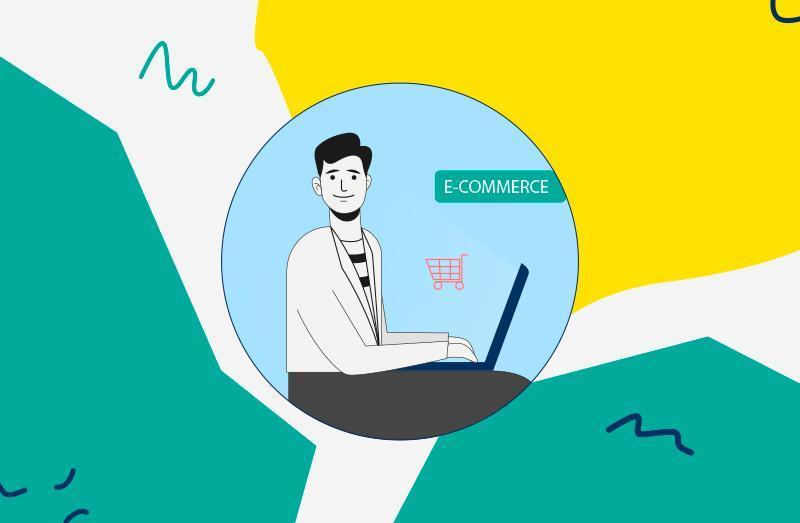According to statistics, the e-commerce market has been growing by 17-18% annually. People are increasingly buying online, which means e-commerce is becoming a profitable investment and an effective business tool. However, traditional online stores are gradually giving way to peer-to-peer marketplace platforms which are gaining incredible popularity. As PwC predicts, the so-called "sharing economy" will have reached $355 billion by 2025.
To assess the prospect of building a marketplace startup, you should look at the successes of the market leaders, such as Amazon, eBay, Etsy, Airbnb, and other mastodons of the p2p e-commerce segment. It's high time you joined the ranks of these popular online marketplaces. And our Agilie team is ready to provide you with some useful tips on the issue, for we have experience and expertise that we are always happy to share with you.
What is an online P2P marketplace?
Online marketplaces are quite profitable due to commission sales, affiliate programs, and promotional tools. Not to mention the scalability of projects and geographic coverage that is virtually unlimited.
However, before moving to the question of how to start a marketplace website, it is necessary to understand what distinguishes such a trading resource from classic online stores, and what are its main advantages.
In other words, we have to answer the following question: what is a marketplace website?
Peer-to-peer business model
What is a p2p marketplace model? We should specify: it is not the same as the usual Internet store is. So, let’s see!
An online store is a multifunctional site, which provides sales on the Internet, and also allows the creation of a full online representation of the offline store. That is, you, as the owner of the resource, independently carry out sales, you bring suppliers and buyers together, and you set prices... of course, the maintenance of such a store requires considerable effort and time.
The situation is much easier with a selling marketplace website where two groups of people meet: some need certain services or goods, others can offer these products under certain conditions (as a rule, barter or payment systems are being used.). There are marketplaces, which allow monitoring of the execution of the transaction, as well as compliance with the obligations of suppliers and customers.
In fact, you, as a p2p marketplace owner, are not selling anything, you’re just providing people with space for the exchange of values, you’re giving a place where supply meets demand. And your task is to make this place as comfortable as possible.
P2P marketplace peculiarity
There are marketplaces consisting of numerous small Internet shops. Such online portals are also beneficial, but their creation requires a great deal of effort. After all, every online store must have certain functionality. Though when it comes to the p2p marketplace model, you offer a trading platform not to companies, but to anyone who has a suitable product (or can provide a service) and wants to exchange it to get appropriate value, whether it's money or something else. Such an approach greatly simplifies the development process, which means it is easier to achieve your goal.

So, we’ve figured out the essence and definition of the p2p lending marketplace, and now we’d like to tackle another question: why do you need to know how to build an online marketplace? What is your benefit?
Benefits of building a two-sided marketplace:
-
Network effect. Users themselves distribute information about your eCommerce marketplace solution. And your main goal is to give the first push, make the site recognizable and useful... and your visitors will do the rest of it, that is, they’ll complete the task of popularizing your service.
-
Geographical freedom. When it comes to online trading, the number of users isn’t limited only to your location - in the end, the problem of delivering the goods is not up to you, your task is to offer a convenient platform on which there is an interaction between the seller and the buyer. So, the number of potential users of your site increases dozens of times.
-
Financial benefit. The online p2p marketplace model allows earning with minimal effort. You don’t even need to set up production or find suppliers of goods, your site visitors will be both buyers and sellers. So here you can get a good profit without the hassle.
-
Simplicity. The task of developing peer-to-peer marketplace platforms is not as difficult as it might seem. The best option is to hire specialists and delegate this issue to them. They definitely know how to create a marketplace app or website (at your choice, since applications can be a very profitable investment either).
-
Financial Accessibility. Launching an electronic trading platform is much cheaper than opening a full-fledged e-commerce site or an online store.
So, we summarize: having decided to build a marketplace app or website, you get:
-
combining supply and demand on one platform;
-
low transaction costs;
-
cash flow from the first buyer;
-
fast aggregation of goods and services according to market needs;
-
ease of creating a client base;
-
reliable protection against viruses and hacker attacks.
Best online marketplace websites
And now let's look at the best peer-to-peer marketplace examples. Maybe, they’ll inspire you to create a marketplace website of the same sort.
So, the largest online marketplaces in the world include such names as…

Amazon.com is the biggest online peer-to-peer marketplace platform which was originally created to sell books. Today, Amazon sells tens of thousands of various products daily, from fishing rods to guitars and designer handbags.

eBay is a trading platform, a kind of online auction which gives users the opportunity to offer, sell, and buy almost any goods in a variety of places and formats of prices. The actual sale contract is being concluded between the seller and the buyer directly. So eBay is not a traditional organizer of the auction.

Etsy is similar to eBay, but it's focused on handmade and art products. The site is also very popular and demanded and belongs to a number of successful online marketplaces.
Craigslist is not an e-commerce platform we're used to, it’s rather a free classifieds board that can help you sell anything. The site has huge traffic because Americans know that here you’ll always find something interesting, rare, or necessary.
Of course, there are many beneficial ideas and types of online marketplaces, and Craigslist is definitely one of them.
![]()
Zibbet is another marketplace focused on those who sell or buy handmade goods. Moreover, Zibbet makes it possible to place 10 products without payment.

Airbnb is an excellent alternative to traditional hotel booking, a system that connects homeowners and travelers who need temporary accommodation. The project covers the whole world. In addition to booking accommodation for himself, a user can become a hospitable host offering tourists to stay in his apartment or at the cottage.
Airbnb acts as a guarantor, all payments pass through its system. Naturally, this is another case of wonderful peer-to-peer marketplace examples.

eBid is the analog of eBay. Having paid $7, the seller gets a place on the website - and such a place is available for a week. If you need an unlimited tariff, you should pay $99. The system operates in 23 countries around the world.

Rakuten allows selling a huge range of products, but it is heavily oriented toward electronics. It is the second most popular site after Amazon, where people buy equipment through the Internet. You can follow this lead and think about how to build an online marketplace of the same type.

Uber is very different from the systems described above. It offers to sell and buy not products, but a certain service: people can order a taxi, and drivers can find their clients. Uber sets its rules and also provides a place to ensure comfortable interaction.

We hope these competitive examples will help you in finding the original and profitable idea of a powerful marketplace website.
Building a marketplace startup
The task to create a marketplace website is not an easy one, it requires a special approach. The most difficult thing is not to actually build the resource itself, but to make it popular. After all, only a popular platform would be in demand, which means it’ll bring you a profit. Having a small number of people offering their goods, you won’t be able to attract buyers. On the other hand, if no one is seeking out products or services on your site, potential sellers won’t not interested in posting their goods here.
We hope, our advice will help to achieve the perfect balance between supply and demand.
#1. Focus on your expertise
In fact, there are a lot of peer-to-peer marketplace examples, as you’ve already noticed, and the sale of goods is not the only option. Therefore, you should be guided by your own expertise when choosing the marketplace area. You must understand your customer and his needs, and the best way to do this is to use your knowledge and experience. Only then will your site become popular and in demand, so that the network effect will have worked quite well.
#2. Find the balance
Thinking about how to build a marketplace app or site, remember that you should meet the needs of two audiences. The first group of users offers goods or services, the second one seeks to get them. And your service must satisfy the requests of both parties. Keep it in mind when developing a system of features. Find the right balance when everyone is happy.
#3. Think of a transaction system
When building a marketplace, think carefully about the interaction between the buyer and the seller. Say, a potential buyer came to your site hoping to find a certain product. What steps should he take to find what he wants and make an order? Remember, the transaction system should be simple, clear, and secure. Eliminate all unnecessary actions (but do not overdo that).
#4. Who came first, the chicken or the egg?
And again, we’re talking about two audiences with which you have to interact. Each of them needs its own approach. And you should primarily decide who to attract (and how) in the first place, sellers or buyers?
#5. Invest in marketing
Marketing is a rather expensive investment, especially at the very beginning. But, once becoming the leader in the niche, it is almost impossible to lose these positions, you’ll already have a high reputation. So the game (namely, marketing costs) is worth the candle (of course, if you’re interested in successful online marketplaces able to bring profit).
#6. Think bigger
Always look for new approaches to old problems, explore innovative opportunities, and keep an open mind. You have to do your best to find the most beneficial peer-to-peer business idea.
#7. Listen to your customers
It would be useful to analyze the behavior of your site visitors and carefully read (and respond) to all comments. It’ll help you immediately react to any unpleasant situation (no one is immune to troubles). The result would be striking in the best possible sense of the word.
And, of course, remain optimistic. The most important thing in business is the very process of creating success. There are smart people who know everything but are afraid to take risks. They say, "Yes, that's a great idea! But what if this or that happens?" And they never start.
And we advise you to start… and make a website like eBay. But first, let's see what it should look like, or what features it must have.
The perfect p2p marketplace model
The perfect p2p eCommerce marketplace solution includes the following features:
-
original, unique, and thematic design
-
convenient administration of goods and pages
-
product catalog
-
goods basket and price calculator
-
ordering and feedback forms
-
order notification via email / SMS
-
possibility of comparison and rating of goods
-
advanced search feature
-
interactive feedback form
-
payment acceptance system
How to make a peer-to-peer marketplace website and app?
So, how to start a marketplace website? What should you remember, what should you take into account?
-
Smart navigation system. The user should be able to quickly find and buy the product of interest. Accordingly, in the process of building a two-sided marketplace, technological innovations cannot be ruled out.
-
Responsive design. According to Statista, in 2017 about 39% of purchases had been made with the help of smartphones, tablets, etc. It is expected that by 2020 traffic from portable devices will have increased about 8 times, which makes the responsive layout an urgent necessity for successful project development.
-
User-friendly interface. The intuitive clean design is half the success of any website, and your online peer-to-peer marketplace platform is no exception. Therefore, it is important to hire competent UI/UX experts to create an interface for your web or mobile resource.
-
Entertaining element. The majority of popular trading platforms use a typical, ordinary, even boring approach to business that is devoid of invention and a factor of novelty. Therefore, any conceptual innovations can attract the target audience and help to stand out from the competition. Say, you can diversify the process of selecting and buying goods with the game component and thereby increase the involvement of users.
We should warn you right away: the possibility to implement these benefits depends on the development method you’ve chosen. Sometimes such modifications are not entirely feasible…
But let's try to be more specific. Suppose you want to build peer-to-peer marketplace software... what options do you have, what is your consecution of action? Let's see…

Three development options to choose from
In fact, you have three main options: you can develop your marketplace from scratch, use ready-made schemes, or resort to the SaaS solution. Each of these methods has its pros and cons.
#1. Development from scratch
So, if you decide to develop your marketplace from scratch, you should understand that such an approach cannot use ready-made solutions and templates. And in this case, you’re unlikely to cope with the task yourself.
But, on the other hand, a process of full and custom creation is the best way to implement the elements of a successful site described above and to build something unique.
But let's look at the issue in more detail.
Pros:
-
Uniqueness. Uniqueness is the main advantage of the custom peer-to-peer marketplace platform. If you want to go non-standard way, this is the only right decision.
-
Flexibility. Since the custom marketplace initially takes into account your specific requests, you can easily make changes to the code (if you want to extend the functionality or something like that). All you need is an understanding of what you want to get, and a competent developer.
-
Original design. A templating solution is clearly not your option if you want to create a marketplace website with its own unique design.
-
Resistance to loads. The platform is being developed with an allowance for the increased load. If your project grows, you don’t have to worry about slow speed and slowdowns.
-
Adding any options of your choice. If you want your resource not to be limited in functionality, it's also worth thinking about how to build an online marketplace from scratch, since it means a creation of the original feature set focused on your specific business purposes.
Cons:
-
The need to hire experts. As we said, you cannot solve the problem on your own. You’ll have to hire developers who know how to create a marketplace app or website.
-
Expensive. Of course, it all depends on the rates of the specialists you've hired. Still, building a marketplace from scratch involves a lot of work, and additional development hours lead to extra costs.
-
Long process. A site from scratch is the most high-quality, unique... and all the unique cannot be created quickly. So you should be patient and wait... However, the result is worth it.
In general, such an option is the best choice if your project is advanced, innovative, and requires a specific approach. Do you think you can be satisfied with a more limited result? Then study the following two eСommerce marketplace solutions.
#2. Ready-made platforms
The second option means building a marketplace with open-source software, such as Sharetribe, Mayocat, or Cocorico. Of course, the result won’t be as unique as when developing from scratch, but time and money costs will be significantly reduced.
-
Sharetribe, a popular open-source solution and a great tool to build an efficient two-sided marketplace (a service like Etsy or Airbnb). Sharetribe supports a lot of useful features such as multi-currency, listing, multi-language, and so on.
-
Programming languages: Ruby and MySQL.
-
-
Mayocat, a wonderful solution, which offers basic marketplace features, and these features are usually quite enough to start your project.
-
Programming languages: Java 7 and a PostgreSQL database
-
-
Cocorico doesn’t work with the goods market, the platform is aimed at those who offer services and want to create a marketplace website like Airbnb. Cocorico provides you with a pretty good set of features including advanced revenue management capabilities, processing of third-party payments and deferred payments, adjustable commissions for sellers and buyers, etc.
-
Programming languages: PHP (Symfony)
-
So, as you see, all these open-source solutions offer advanced marketplace feature sets, and all you have to do is modify and finalize provided functionality, adapt it to your individual requests.
However, there are also such resources as Magento, Drupal, OpenCart, etc. They’re quite efficient too though they’re originally intended for online stores (not marketplaces). But it doesn't mean you cannot build a marketplace app or website with their help. On the contrary, you may take advantage of these ready-made platforms: the same Magento, by the way, is a fairly popular open-source system. If you want to use it, don’t forget about the Magento extension to customize the solution to the needs of your p2p service.
Pros:
-
A simple solution. Yes, such a solution is much easier to bring to life. In the case of custom development, more effort should be made.
-
Fast development process. The first advantage leads to this one. You’ll need substantially less time to make a website like eBay.
-
Relatively inexpensive solution. Simplicity & high speed of development is equal to saving money.
Cons:
-
The lack of uniqueness. The solution is more typical than designing a project from scratch.
-
The difficult upgrade process. Yes, a site created with open source platforms is much more difficult to scale.
-
The need to hire experts. As in the case of development from scratch, you’ll have to hire the assistance of experts to adapt one of the open-source systems to your resource's requests.
#3. SaaS solution
And, lastly, you can choose SaaS as your eCommerce marketplace solution.
SaaS means "Software as a Service". Such a way to create a marketplace website is really easy though it has its by-effects.
There are a lot of popular SaaS solutions:
-
SaaS solutions focused on the development of marketplaces:
-
Sharetribe, one of the most popular platforms offering a very convenient solution for the development of P2P services. Its important advantages are permanent technical support (24/7) and high security (SSL Certificate, PCI Compliant).
-
Marketplacer. The solution allows building a two-sided marketplace of any type. Marketplacer is difficult to adapt to the individual needs of the client, but in general, the platform is quite suitable to use. Its important benefit is a connected analytics system, such as Google Analytics and Financial Reports (and many others), which will enable you to monitor the development of your project.
-
Near Me. The platform offers fairly extensive functionality and good design solutions. However, it affects the cost of services (increasing it, of course).
-
-
SaaS solutions, aimed at the development of online stores. Though, they, too, can be used to build multi-vendor marketplaces (with some modifications and adaptation).
-
Shopify, a demanded SaaS platform being used for 9% of all e-commerce projects. The service provides a convenient management system and a server - you just need to pay a fixed monthly fee; but, in fact, the site itself is not the property of the entrepreneur.
-
Oracle Commerce, another SaaS service, which has been used to create almost 11% of online stores all over the world. The solution is especially popular in European countries and the USA. It has a developed system of navigation and the convenience of managing the catalog.
-
Demandware, one of the largest and most scalable SaaS platforms. 6th in the world ranking, it is used to create 5% of e-stores. Almost all the necessary functionality is available "out of the box" which allows you to start your project as quickly as possible. However, it has significant shortcomings, among which are the instability of the payment tariff and the existence of the sales limit.
-
Pros:
-
Help is not needed! Using a SaaS solution, you don’t have to know how to start a marketplace website. Moreover, in most cases, if you don’t need help from developers too. You can manage on your own.
-
Reduced costs for technical support and system upgrades. Providers of SaaS solutions take on this task.
-
The high speed of implementation. Using the SaaS solution, you can create a marketplace website (or app) really quickly, without any delay. It means you won't need much time to implement your idea.
Cons:
-
Inability to modernize the system for yourself. SaaS models are inefficient if your service requires deep individualization, as well as innovative and niche solutions.
-
Template solutions. You’ll have to accept the fact that your site won’t be original and unique.
-
The safety factor. Many are afraid to use SaaS because of security concerns and possible leakage of information from the provider of SaaS services.
So, we summarize: SaaS is a special ecosystem providing you with the possibility to use a certain group of features; moreover, such basic functionality is constantly being improved (by providers of the SaaS service). And, in consequence, your project is being improved too.
On the other hand, the SAAS solution won’t allow you to redesign the site in your own way. Simply put, the site will have technical and assortment restrictions. Whereas open-source platforms (say nothing of developing from scratch) give you the opportunity to create a marketplace website that is not limited to anything (technically or in terms of design).
Stages of development
If you decide to develop your marketplace from scratch or by using open-source platforms, we offer the following development steps:
-
Preparation of the technical project. In the 1st stage, the purpose of developing the site (or application) is being determined and a technical project is being developed.
-
Creating a prototype. The qualitative project design will allow you to see the site structure and evaluate the location of the blocks and services.
-
Creating a Design Pattern. On the basis of the prototype, a visual structure of the site is being created, and decorative elements and various animation effects are being reconciled.
-
Layout. The layout is the transformation of the static design pattern into dynamic "live" pages.
-
Development. Building a two-sided marketplace involves a lot of work, including payment gateway integration, creating different features, developing a search engine and a filtering system, and much more.
-
Testing and debugging the site. In the last stage, the project is being tested, and all the errors made during the development process should be identified and fixed.
What experts do you need to build peer-to-peer marketplace software?
So, who should you hire to implement these stages of the development process?
-
UI/UX designers. Yes, you may need them, especially if you want to develop a site from scratch.
-
Web and Mobile developers. Even if you plan to create a marketplace website, you’ll certainly need its mobile version. So, experts in mobile development will also come in handy.
-
QA experts. These specialists are responsible for testing your resource and its serviceability.
It is more reasonable to hire a company, which employs all these experts. The main thing is to make sure they know how to build a marketplace app or site and have relevant practical experience.
Our example of building a marketplace
As we’ve already said, the e-commerce market is growing from year to year. We can add that the barrier to entry is also growing... which means it’s necessary to take your place in the sun right now. And we’re ready to help you join the number of best online marketplace websites.
By the way, we have experience in building a marketplace with open-source software and using unique solutions (depending on the task). We have several projects of the sort, one of which is Bookis.

Bookis is an application supporting iOS and Android platforms. The app is intended for users of Norway and aimed at bibliophiles: moreover, those who prefer not electronic, but paper books.
How does it work?

Suppose you have a book and you want to sell it. All you have to do is scan its barcode so the service will give a detailed description of the publication (year, author, publisher, etc.). You should add a couple of comments: specify the state of the book, clarify how much money you want to get, and so on.
On the other hand, if you’re looking for a book, the situation is even simpler. The convenient search system allows you to find the edition you need and offers all available options. Having found the desired book, you make an order. And then you either negotiate with the seller about a personal meeting or use the courier service (Bukis provides such an opportunity).
In addition to the books used, the application also allows searching for literary novelties.
While building a marketplace app, we thought of ways to make both groups of users interested in the service. And we succeeded.
Benefits for the buyer (1st group):
-
advanced search feature
-
sorting
-
price comparison
-
protection against misconduct
-
convenient delivery system
-
possibility to assess the state of the book at a distance
-
chat with other users
-
possibility to read reviews of other users and leave yours
Benefits for the seller (2nd group):
-
opportunity to put your own price
-
detailed statistics for assessing consumer behavior
-
the simplicity of the process of adding goods (books)
-
the ability to communicate with other users

As you can see, we know how to create a marketplace app or website. And if you’re interested in such services and looking for expert help, we’re more than happy to provide it and make your dream come true.


